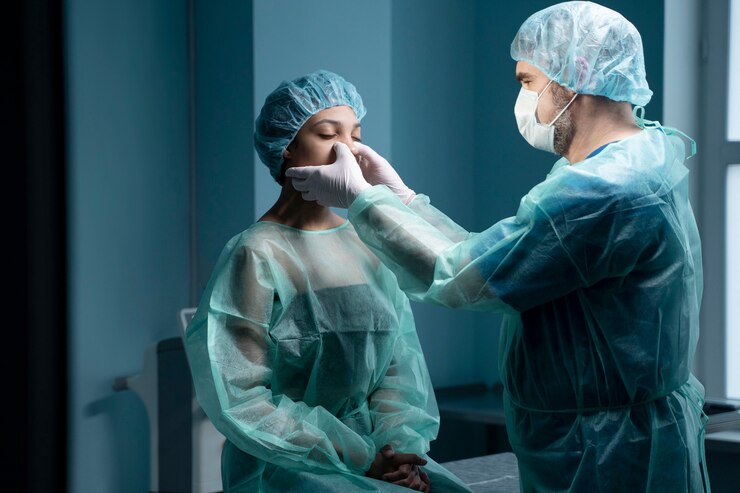Rhinoplasty, commonly known as a nose job, is a popular cosmetic procedure that aims to reshape or reconstruct the nose for aesthetic or functional purposes. Turkey has emerged as a prominent destination for individuals seeking this surgery, thanks to its combination of skilled surgeons, advanced medical facilities, and competitive pricing.
However, potential patients often find themselves wondering about the rhinoplasty cost in Turkey and the various factors that influence it. In this article, we will explore the essential aspects that contribute to the overall price of rhinoplasty in Turkey.
Understanding Rhinoplasty: A Comprehensive Overview
Before delving into the financial aspects, it's crucial to understand what rhinoplasty entails. The procedure can be categorized into two main types: aesthetic and functional. Aesthetic rhinoplasty focuses on improving the appearance of the nose, addressing issues such as size, shape, and symmetry. Functional rhinoplasty, on the other hand, aims to enhance nasal function, often correcting breathing difficulties caused by structural abnormalities.
In Turkey, patients are drawn to rhinoplasty not only for the expertise available but also for the opportunity to combine their medical journey with a unique travel experience. The country's rich history, stunning landscapes, and vibrant culture make it an appealing choice for medical tourism. Thus, the allure of achieving a more desirable nose while exploring Turkey's beauty adds an extra layer of appeal for many.
Factors Influencing Rhinoplasty Cost in Turkey
1. Surgeon’s Experience and Reputation
One of the most significant factors affecting the rhinoplasty cost in Turkey is the surgeon’s experience and reputation. Highly skilled and renowned surgeons often command higher fees due to their expertise, successful track record, and specialized training. Patients should thoroughly research potential surgeons, looking at their credentials, before-and-after photos, and patient reviews. While opting for a more affordable surgeon may be tempting, it’s essential to prioritize safety and quality of care.
2. Type of Procedure
The specific type of rhinoplasty being performed also plays a crucial role in determining the overall cost. Closed rhinoplasty, which involves incisions hidden inside the nostrils, tends to be less invasive and may be less expensive than open rhinoplasty, where incisions are made across the columella (the tissue between the nostrils). Additionally, patients seeking complex reconstructions or revisions may incur higher costs due to the intricacies involved. Understanding the nuances of each type of procedure will help patients anticipate their financial commitments.
3. Anesthesia and Facility Fees
The choice of anesthesia—local or general—also influences the total cost of rhinoplasty. General anesthesia typically incurs additional fees, as it requires an anesthesiologist and more extensive monitoring during the procedure. Furthermore, the medical facility's accreditation and amenities can affect pricing. High-quality hospitals or clinics with state-of-the-art equipment may charge more, but they often provide better safety standards and care.
4. Geographic Location
While Turkey is known for its competitive pricing in the realm of cosmetic surgery, the geographical location within the country can also affect costs. Major cities like Istanbul and Ankara may have higher prices due to increased demand and the presence of more renowned clinics and surgeons. However, patients may find that some less populous regions offer equally skilled surgeons at lower costs. It's important to weigh the benefits of convenience and reputation against potential savings.
Additional Considerations for Rhinoplasty Patients
1. Pre-Operative Consultations
Before undergoing rhinoplasty, prospective patients typically undergo a series of consultations with their chosen surgeon. These consultations not only help determine the patient’s specific needs and expectations but may also come with additional fees. It’s essential for patients to be aware of these potential costs as they plan their budgets.
2. Post-Operative Care
Rhinoplasty is not just a one-time procedure; it involves a recovery period during which patients must adhere to specific care instructions. Follow-up appointments, medications, and potential revisions can add to the overall cost. Patients should consider these factors when budgeting for their rhinoplasty journey, as they play a crucial role in achieving optimal results.
3. Travel and Accommodation
For international patients, travel and accommodation expenses can significantly impact the total cost of rhinoplasty. While Turkey offers affordable surgical options, patients must also factor in flights, lodging, and transportation. Many clinics in Turkey provide packages that include accommodation and airport transfers, simplifying the logistical aspects for patients traveling from abroad.
4. Currency Exchange Rates
Considering the fluctuating nature of currency exchange rates is vital for patients planning their rhinoplasty in Turkey. While the cost of the procedure may appear low when converted to a patient's local currency, changes in exchange rates can affect the final price. Staying informed about current rates can help patients make more accurate financial assessments.
Conclusion: Making an Informed Decision
Rhinoplasty can be a transformative experience for individuals seeking to enhance their appearance or improve their breathing. However, understanding the factors that contribute to the rhinoplasty cost in Turkey is essential for making an informed decision. By considering elements such as surgeon expertise, procedure type, and post-operative care, patients can better navigate their options and expectations.
For those contemplating rhinoplasty, Este Medical Group offers a comprehensive range of services and experienced professionals dedicated to patient care. Contact them today to learn more about how they can assist in achieving your aesthetic goals while ensuring a safe and rewarding experience in Turkey.





Comments